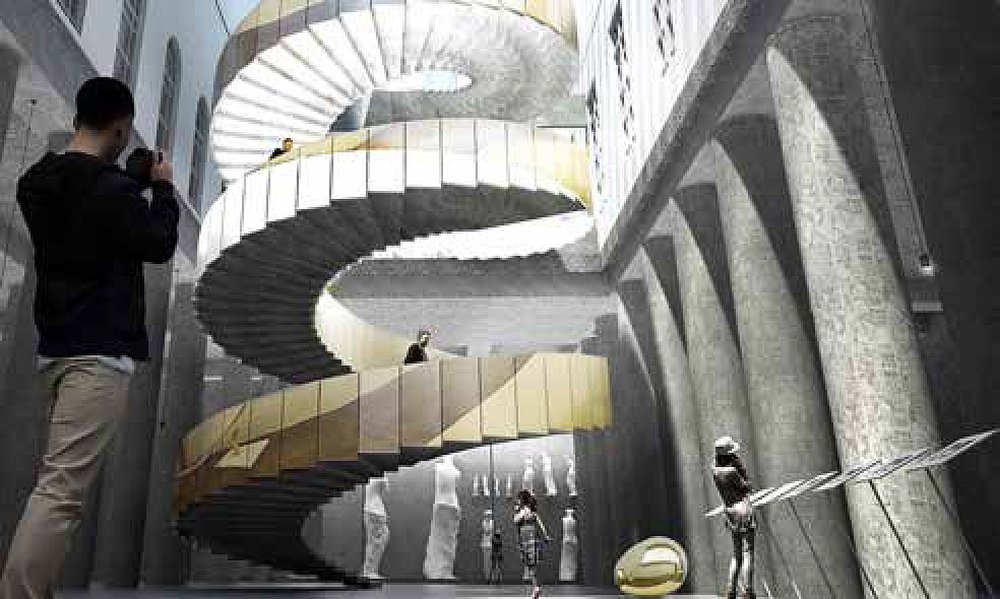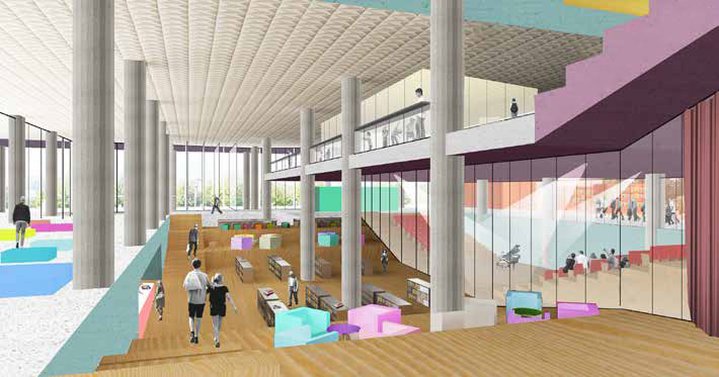Building the future

Underground space of the Pushkin Museum of Fine Arts, proposed by the “Meganom”
New walls of the old museums: architects and their blueprints
Russia’s big state art museums have traditionally been presented as majestic temples of culture. But things have begun to change over the past few years as the Pushkin Museum, the Tretyakov Gallery and the Hermitage Museum mull expansion plans to allow for a more imaginative engagement with the public and more room for contemporary art.
With its existing premises large enough to show only 13 per cent of its collection, the Pushkin badly needs additional exhibition space. Having rejected a design by Norman Foster for a new building, the museum is pushing ahead with plans to incorporate three converted Tsarist-era mansions and their gardens into a museum-leisure complex that blends harmoniously with Moscow’s historic centre. Many of the new facilities, including a repository, renovation workshops and some galleries will be concealed in cavernous underground halls beyond the realm of the city conservation guardians. “This is not a castle in the air,” says Natalia Krutilina, the head of development at the Pushkin. “Drilling is already happening under the ground.”
Apart from increasing public access to its treasures, the Pushkin wants to use its expanded empire as an incubator for contemporary art. Sculptors and painters will be invited to show their works in temporary exhibitions in the parks and walkways linking different parts of the complex.
On the other side of the Moscow river, the Tretyakov gallery is expanding, too. The new annex on the Kadashevskaya embankment near the historical building will house exhibition halls, archives and restoration workshops. The construction is led by the Mosproekt-4 architectural bureau while the facade was designed by another studio, SPEECH. The completion date of the works which started in 2014 has not been announced yet, according to unofficial information the building will be opened to the public in 2021. The New Tretyakov proposes to take over the whole of the Soviet modernist building it shares with the House of Artists so as to more than double the exhibition space for its collection of Russian 20th century works. Dutch architect Rem Koolhaas, who earlier oversaw the transformation of a Soviet-era cafe into the Garage Museum of Contemporary Art, has produced a design for a project that sweeps away interior walls at the New Tretyakov to improve light and accessibility and replaces the staircase to the fourth floor galleries with an escalator.
While the Pushkin and the Tretyakov are staying put in the historic centre, St. Petersburg’s Hermitage plans to establish its first Moscow outpost in a new mixed-use development at an abandoned industrial site that once produced Zil limousines for the Soviet Politburo. Hani Rashid, co-founder of the New York-based Asymptote architectural firm, took inspiration from the Russian constructionist artist El Lissitsky in designing an angular geometric building for the Hermitage to sit among the skyscrapers on the Zil territory and house 20th and 21st century art. The project is part of the Big Hermitage scheme launched in 2007. There are existing branches in Vyborg, Kazan and plans for branches in Vladivostok, Ekaterinburg, Omsk, Kaluga and Kaliningrad in various degrees of development. This is in addition to Amsterdam, which is very successful and Shanghai where negotiations are underway. The construction of the Northern part of the new “Zilart” district, which includes housing blocks, along with the Hermitage is planned to be completed in 2024. But with not even a provisional date set for a start to construction of the museum, Moscow may have to wait a long time for the honour.







